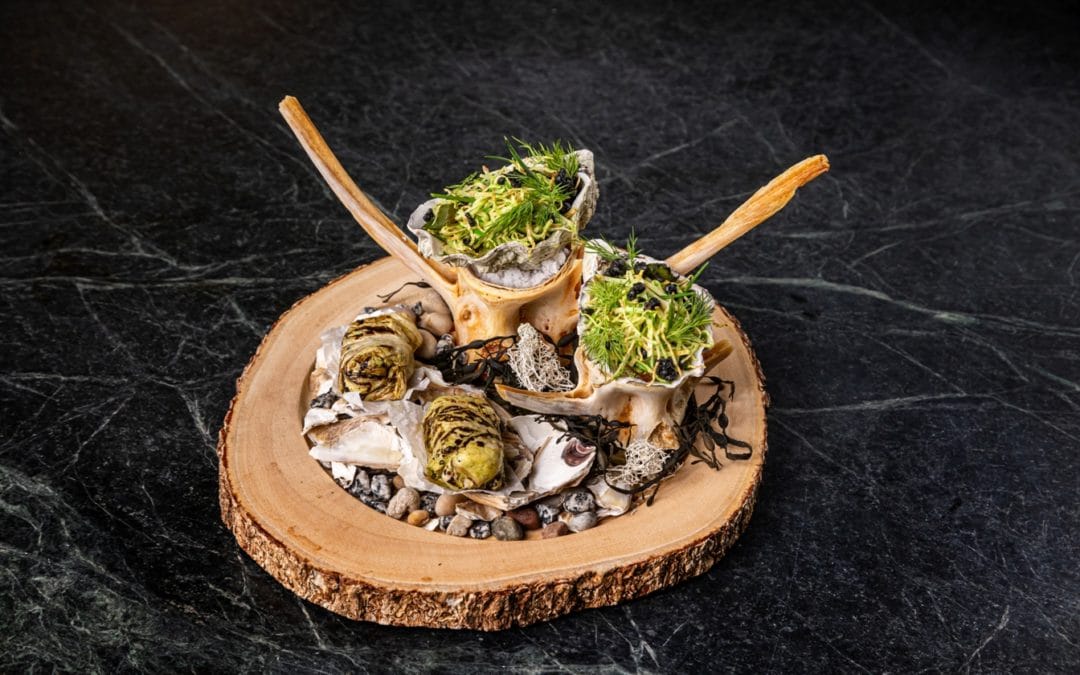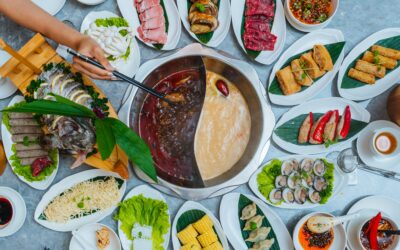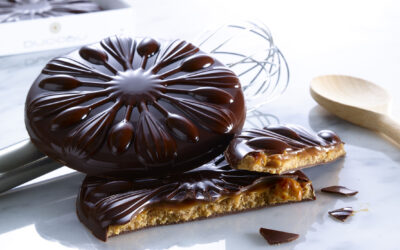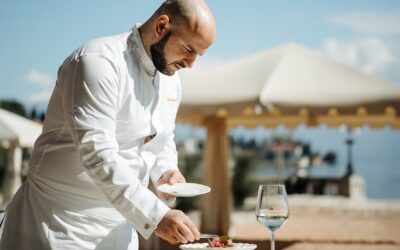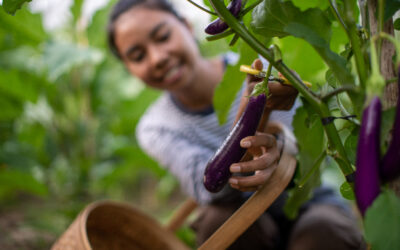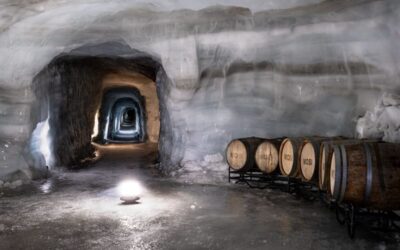Ron McKinlay Chef de Cuisine Canoe Restaurant Toronto Canada spent his formidable years working for Tom KItchin in Edinburgh. Later he moved to Melbourne, Australia, where he helped open Maze by Chef Gordon Ramsay and then moved on to work under Chef Scott Pickett at Estelle Bar & Kitchen. After rising up to senior sous chef, he was appointed by Chef Pickett to open and lead Saint Crispin as chef de cuisine, which would earn two hats in 2014. The following year, he took a chef de cuisine position at the Six Senses resort in Zighy Bay, Oman. While he embraced his autonomy and took the opportunity to create and test out new dishes, after 18 months he was ready to come home to Canada.
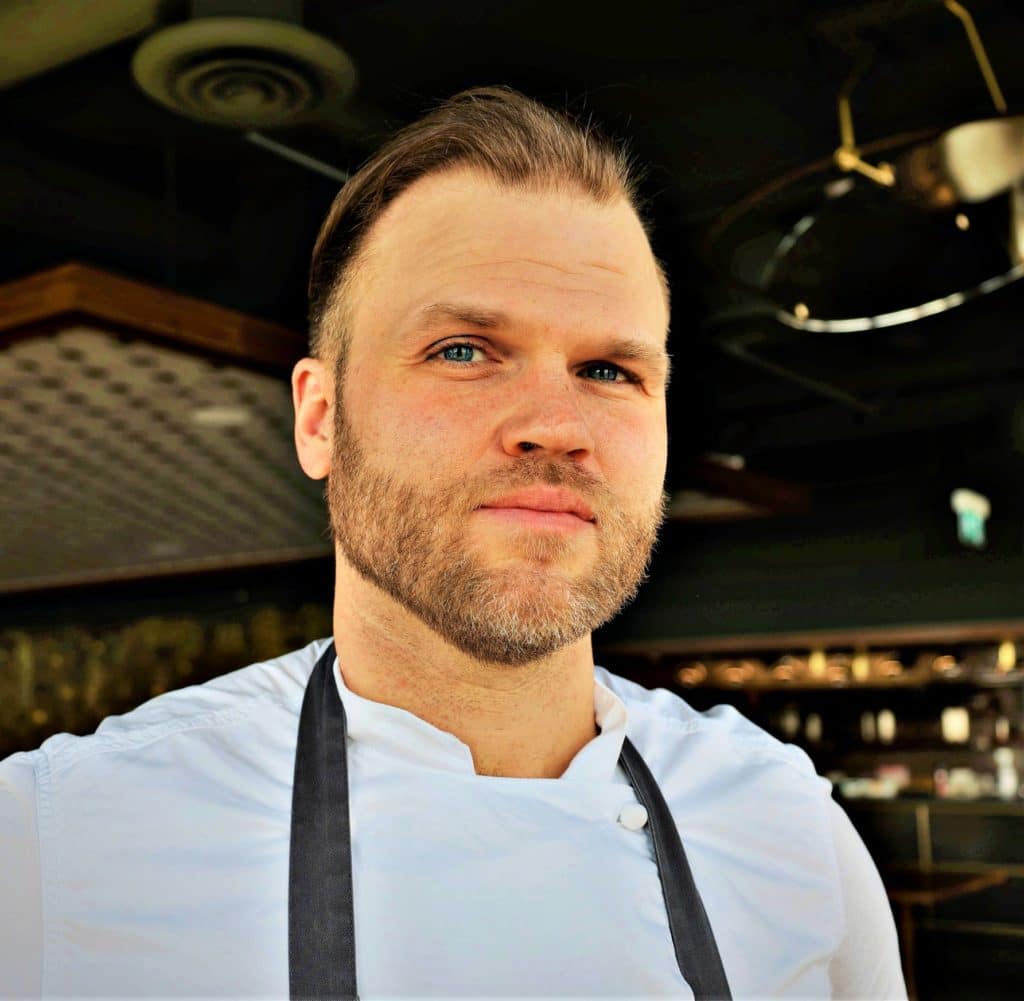
Chef Ron McKinlay
“Currently the Chef de cuisine of Canoe, I am excited to create new dishes and flavours influenced by Canadian ingredients — with West Coast suppliers getting us sea urchins, Kombu and hand-dived scallops to an East Coast Forager who sources sea lettuce, Norwegian pine cones and sea buckthorn – to us local is coast to coast! Canadian Turbot being caught for us just off the coast of Baffin Island, in Nunavut. Closer home we have local suppliers who forage spruce tips, wild blueberries, birch syrup, pine catkins, wild ginger and local lamb from our friends at Tamarack Farms,” he says.
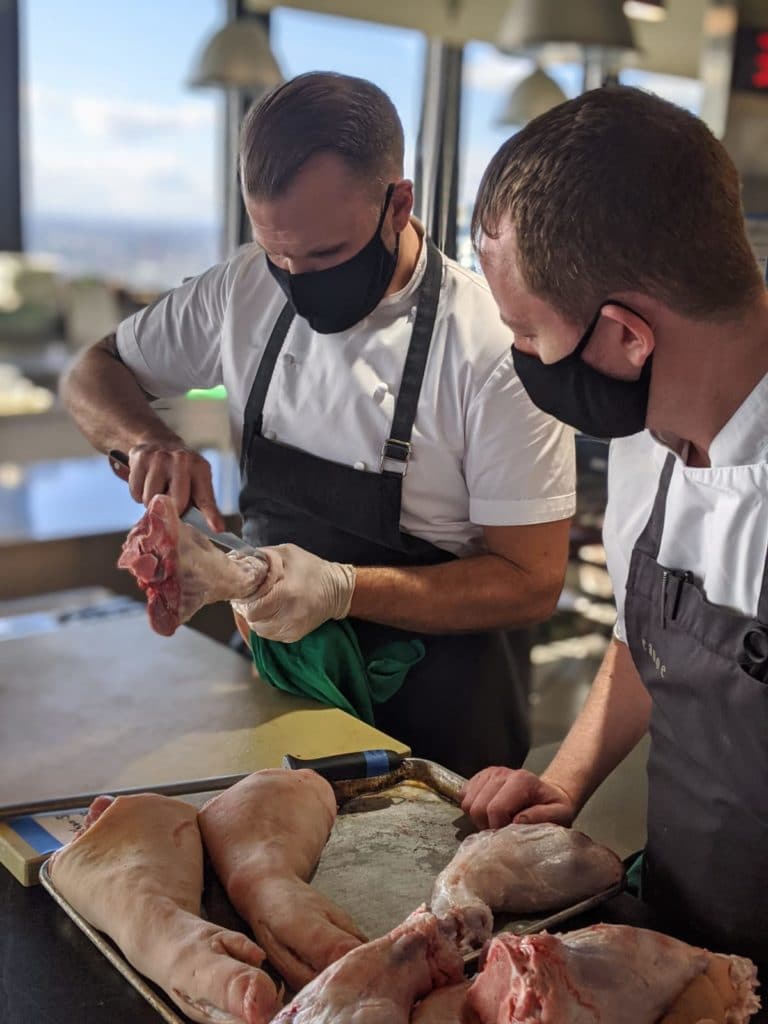
Chef Ron de boning pig trotters with Sr Sous Des Murphy Photo by Charlene Lunau
Do you have a favourite time of year or set of ingredients that you look forward to working with?
I think my favourite time of the year is spring. Especially in Canada as we recover from a harsh winter so when spring starts everything comes back to life. From asparagus to spruce tips to morels + chanterelles. I always get very excited to see these ingredients come into the kitchen.
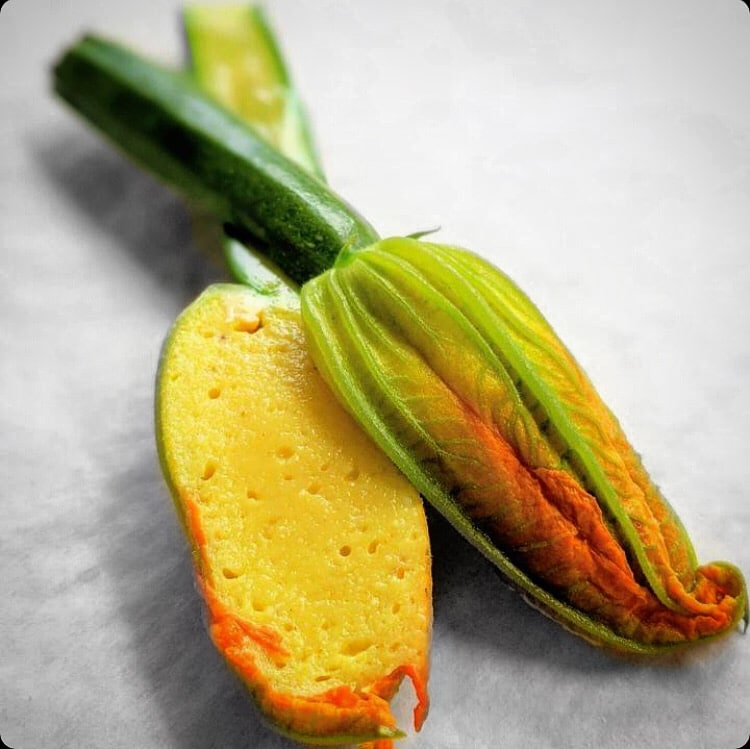
Atlantic Scallop Stuffed Ontario Courgette Flower Photo by Charlene Lunau
What would you do if you weren’t a chef?
10 years ago I don’t think I would have had an answer for you. But if I wasn’t able to be a chef I would still have to be involved with food. I would say a food stylist or food photographer. At least that way I could still touch food and still get to showcase my artistic side.
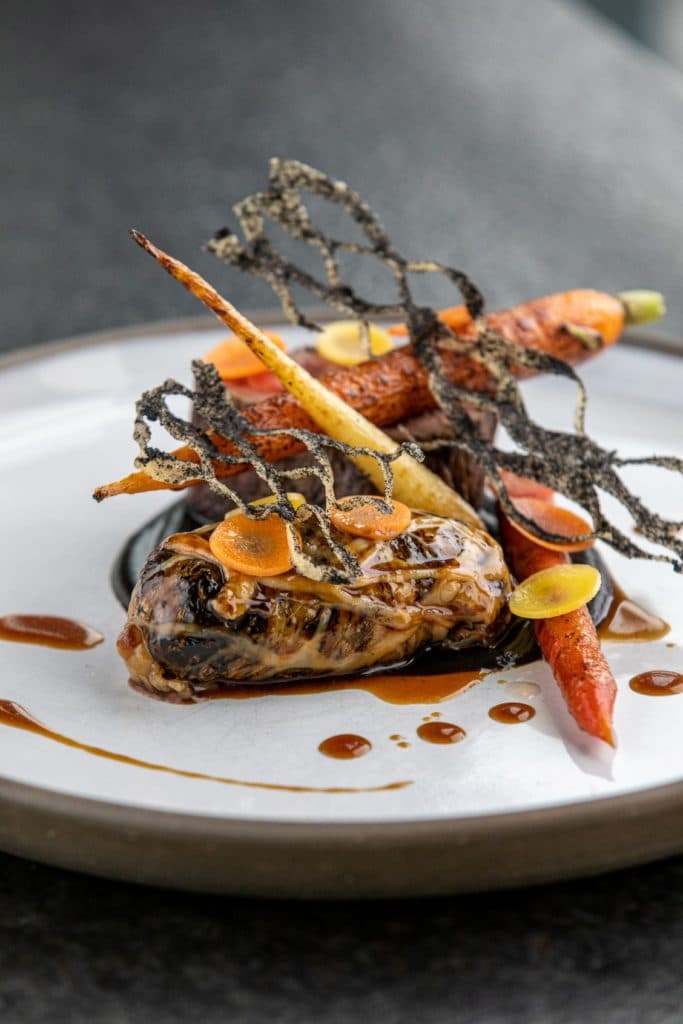
Ash Rubbed Albertan Filet with Burnt Cabbage chou farsi + madeira jus gras Photo by Rick O’Brien
Do your personal preferences influence the menu at all?
I think my training and background comes through more than personal preferences but yes the menu reflects where I have been and who I have worked for at the same time my own style is very much developing. It’s definitely a marathon not a race.
What do you think is the most over-hyped food trend currently?
I don’t understand this obsession with sour dough. Fresh baked bread is amazing but not every day.
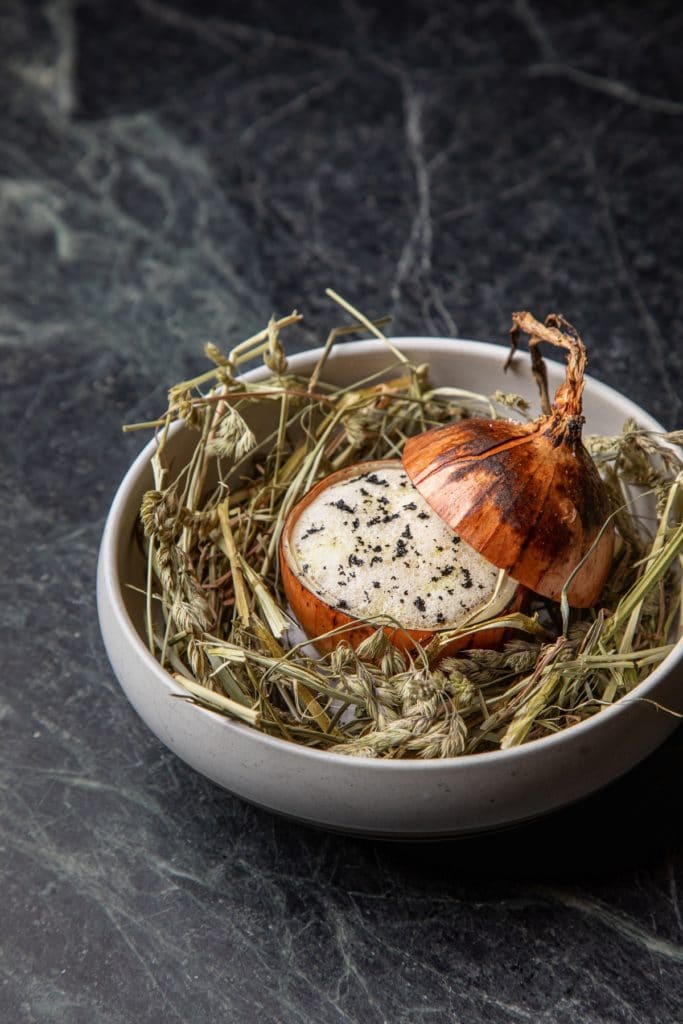
Canadian Onion Soup Photo by Rick O’Brien
When are you happiest?
Well at work it’s definitely working on a butchery project for sure. I love all the aspects of whole animal butchery and what to do to utilize each and every part. Always working on little to no waste and utmost respect for the animal.
When you’re not in the kitchen where can you be found?
Probably out somewhere going for a bike ride. One benefit of living in a city with little to no hills is it is very easy to get around.
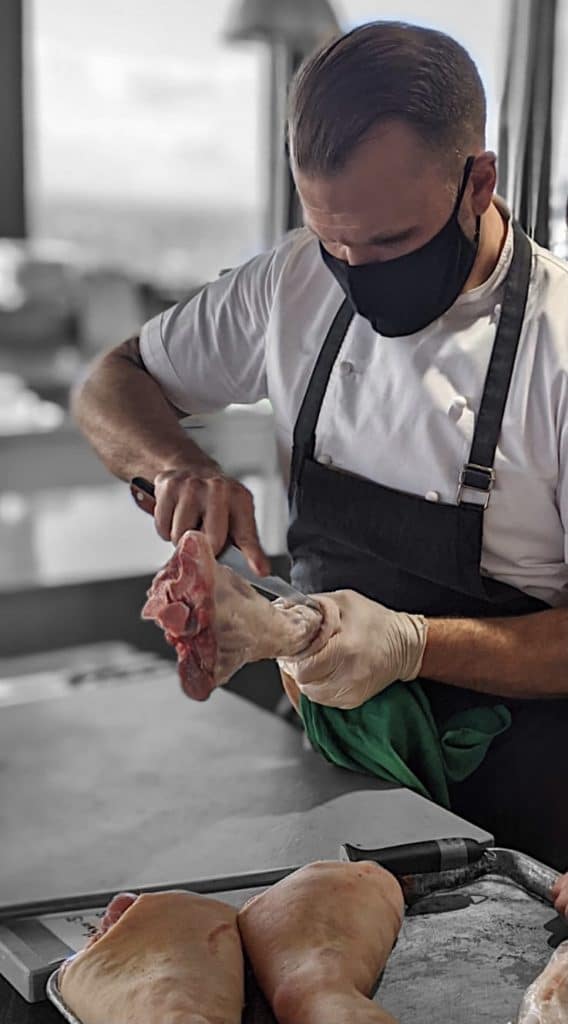
Chef Ron de boning Pigs trotters Photo by Charlene Lunau
Where is your favourite place to dine?
My favourite place to dine properly is always London! I don’t get there often enough but the food scene there is a very high level and always changing
What’s your favourite takeaway or comfort food?
Mom’s Sunday roast when I am back home in Vancouver for sure. I do love my Chinese food for sure!
What makes the local food scene so exciting?
Toronto’s food scene is massively underrated. With such a huge mix of cultures you get some amazing restaurants at every price point.
Which is the dish you’ve created that you are most proud of and why?
I can’t say that there is one to mention. But my team and I are always pushing to highlight Canadian produce and make it better all the time.
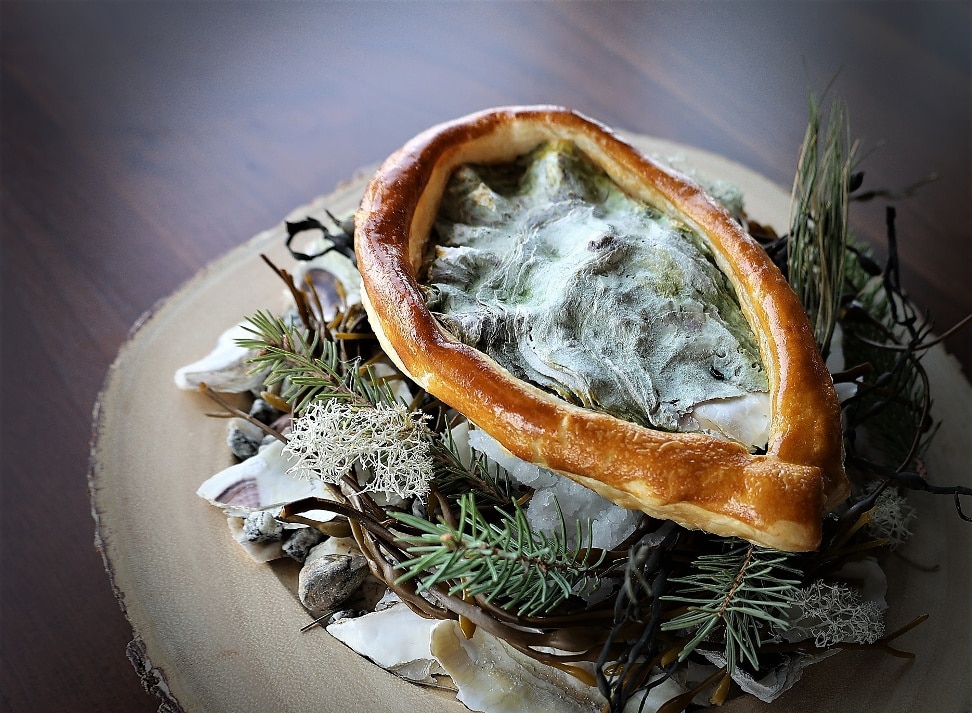
Fanny Bay Oyster en croute with champagne + nova scotian sea lettuce veloute Photo by Chef Ron
You’re having friends over for dinner tonight. What’s on the table?
I would keep it simple for sure. A massive bowl of Bolognese or some fried chicken. Crowd pleasers but when done properly they are amazing. I am a big fan of simplicity done well.
Name your favourite city that has it all: food, culture, and nightlife?
One of my fondest all in one adventures was definitely in Porto, Portugal. It’s an incredible city. The people are all a lot of fun. Really amazing food culture steeped in history and great wine everywhere!
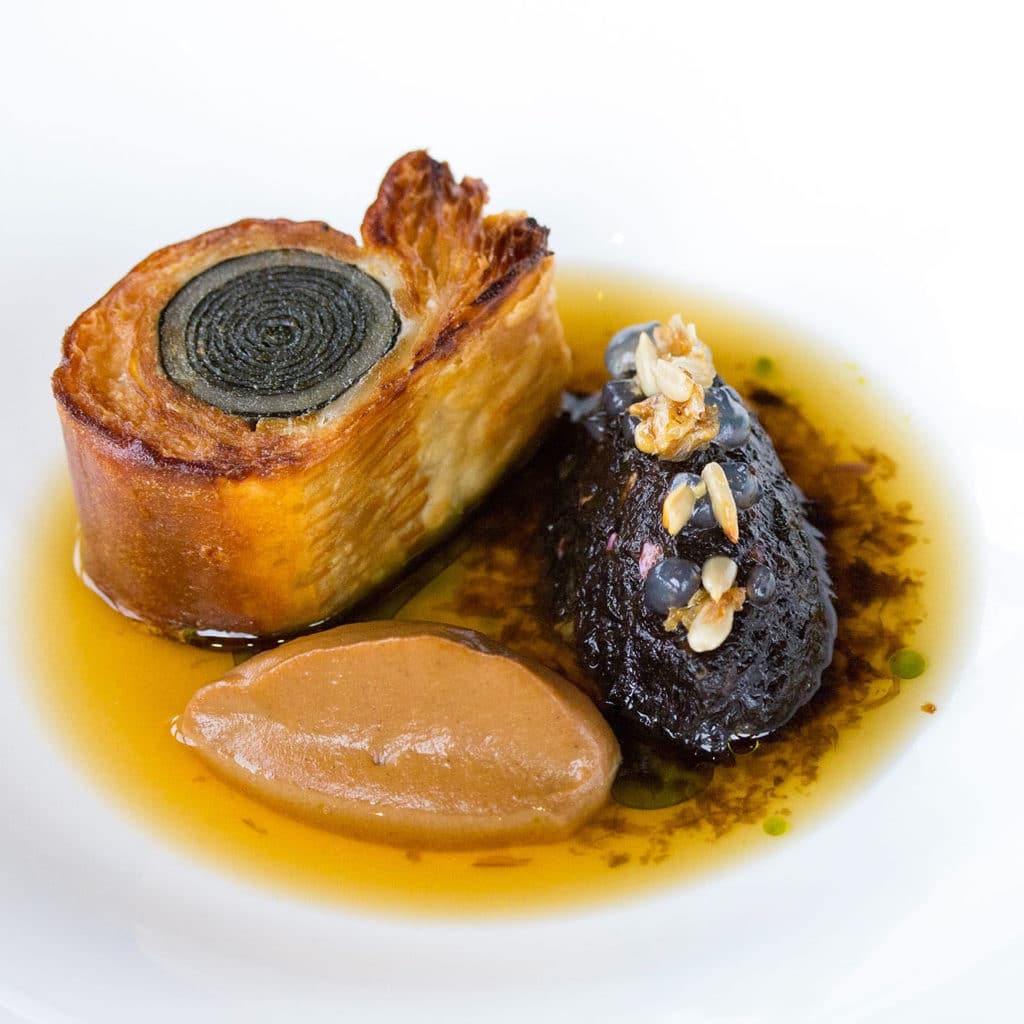
Potato, Nori + Miso Photo by Cindy La
Can you tell us more about the cuisine at your delivery kitchen/restaurants? Currently due to lockdown we are operating on a delivery only operation. We offer a few different types of meal kits from a 4 course Canoe at Home Menu with a few finishing touches needed to a few more simple meal kits like a stuffed Ontario lamb saddle that comes ready to be roasted.
WELLINGTON FOR 2
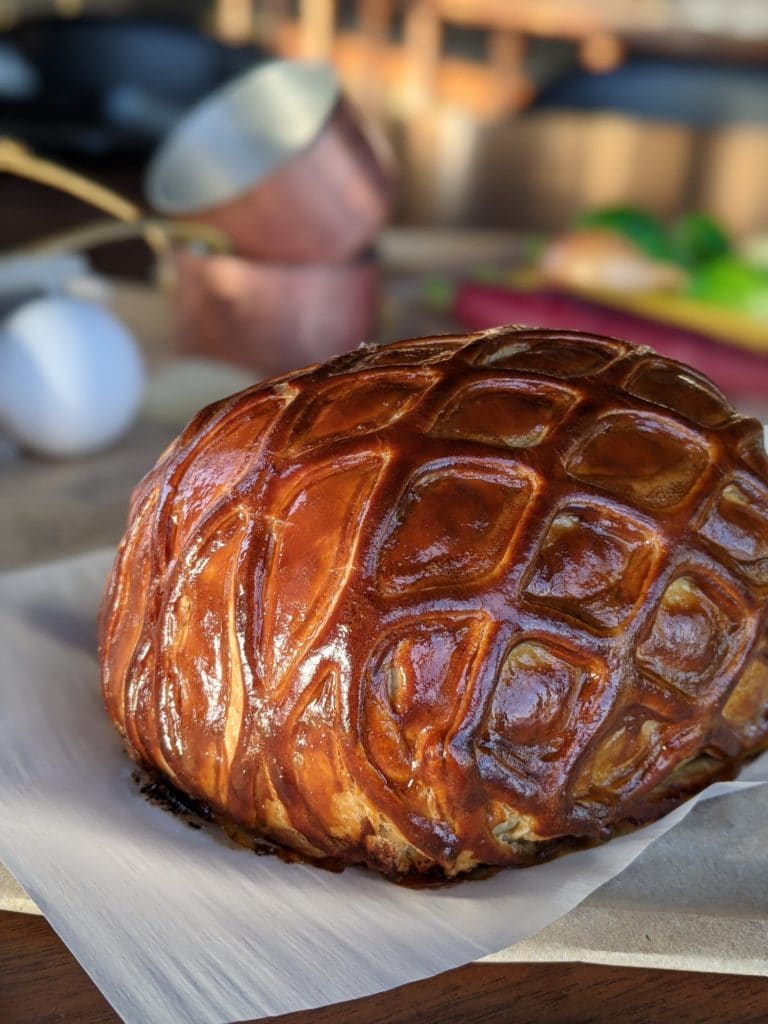
Beef Wellington Photo by Charlene Lunau
For the crepes
- 150g plain flour
- 1 large egg
- 325ml semi-skimmed milk
- 30g unsalted butter, melted
Make the crepes first; place the flour in a large bowl. Add the egg and 100ml of the milk and gradually whisk into the flour; carry on adding the rest of the milk until you have a smooth batter. Season and whisk in 20g of the melted butter. Using a 20cm-base diameter (preferably) nonstick frying pan, brush a little of the extra melted butter around the pan over a medium heat and carefully pour in just enough batter to make a fairly thin crepe. Cook for 1 minute on each side, and repeat until you have 2 evenly sized ones (the mix makes 5, to allow for any problems). Stack on a plate, separated by strips of baking paper; leave to cool. Can be made a day in advance
Preparing the Beef
- 12-14oz beef fillet, trimmed of any sinew (ask at the butchers counter- as evenly sized as possible)
- 1 tbsp oil
- Salt & pepper
Season the beef fillet well with salt and pepper and rub all over. Heat 1 tablespoon of oil in the pan. When it is smoking hot, lower the beef fillet in and sear all over for about 3 minutes, turning frequently, to just get a little colour all over. Transfer the beef fillet to a plate. Roll tightly in cling film to help set the shape and place in the fridge for 30mins (also this can be done 1 day in advance)
Chicken Mousse
- 1 chicken breast, skinned and diced
- 1 egg white
- 200ml of double cream
- salt
- freshly ground black pepper
To make the chicken mousse for the stuffing, add the diced chicken breast to a blender and blitz until smooth with the egg white, cream, salt and pepper. If possible Pass through a drum sieve to achieve a perfectly smooth purée
Next step is to start assembling the wellington
- Lay out a large sheet of cling film ( to be used to roll the meat)
- Ontop of the of the cling film place 2 crepes over lapping by 1/3rd
- Spread chicken mousse in a thin 1cm layer as wide as the beef filet and long enough to wrap side to side. Now place beef in the middle and using the cling film to roll up similar to a burrito- seriously
- Wrap the log shape in the cling film and place in the fridge- allowing the shape to set
- 1 Package (500g) puff pastry- pre rolled/sheets
- 4 egg yolks- for egg wash
- Pastry brush
- Pull out a sheet of store bought puff and dust with flour
- Roll out as thin as possibly without fear of tearing.
- Roughly 25cm x 20cm
- Dust off excess flour and brush with egg yolk to cover entire surface ( acting like glue)
- Remove wellington from the cling film and place it centred against the bottom of the pastry closest to you.
- Lift up the bottom edge and roll upwards until filling is covered and there’s roughly a 2-4 cm over lap (seal)
- Carefully pat down the loose outside edges and Trim leaving just enough to tuck under the meat.
- Transfer this to a parchment line baking sheet and again dust off excess flour
- Brush with egg yolk and place in the fridge to let the yolk set ( 30 mins)
- Bring out and glaze once more with the egg yolk mix
Cooking Instructions
- No need to temper the Wellington; the pastry needs to be refrigerator-cold to cook properly.
- For Medium Rare: cook the Wellington for thirty-five (35) minutes or until the pastry is a dark golden-brown. If you have a meat-thermometer, then pierce the width/short-side of the Wellington. Make sure the end of the thermometer reaches the centre of the tenderloin. Medium-rare tenderloin should be 38°C/100°F. If you prefer Medium, cook for 5-10 more minutes. If you prefer Medium-Well, then cook for 10-12 more minutes.
- *IMPORTANT: If cooking in a traditional/conventional oven, rotate the baking sheet 180° every 11-12 minutes.
- Remove the Wellington & baking sheet from the oven and allow to cool/rest at room temperature for at least ten (10) minutes. Resting the Wellington is a very important step of the cooking process.
- Use a serrated bread knife – or a very sharp chef’s knife – to carve cross-cut slices of the Wellington. Not length-wise!


